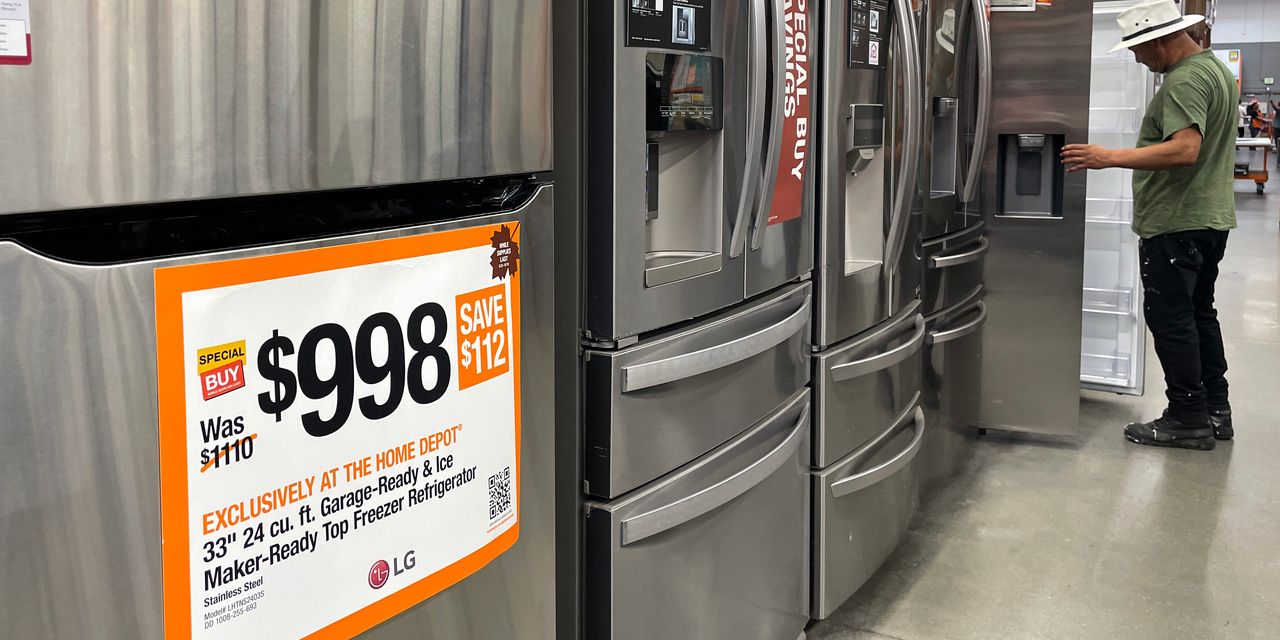Inflation did not relent over the summer, and the cost of living in September is unlikely to show any letup in how much consumers are paying for goods and services.
The following is what to watch in Thursday’s consumer price index. The report will also determine the final cost-of-living adjustment for Social Security recipients in 2023.
See: COLA is coming, and here’s how much Social Security benefits are likely to rise next year
The forecast
The cost of living is expected to climb a relatively mild 0.3% in September, partly because cheaper gasoline kept the overall price increase down.
Still, the rise in the CPI over the past year is expected to be little changed at around 8.2%. That’s one of the highest annual inflation rates since 1982 and more than quadruple the annual increase in inflation in the decade before the pandemic.
Core inflation
Since food and gas prices can be quite jumpy, the Federal Reserve views the so-called core rate of inflation as a better indicator of future price trends.
The core CPI, which omits food and energy, is forecast to rise a more pronounced 0.5% in September. Such an increase would push the yearly rate of core inflation up to 6.5% from 6.3%, economists estimate, to match the sharpest core increase since 1982.
That would not be good news for investors or the economy. The core rate includes staples such as rent and housing, medical care, and car prices.
When the core rate is rising rapidly, it’s a sign of persistent price pressures that can only be stamped out by higher interest rates. And higher rates slow the economy.
The Fed is quickly jacking up rates to try to quell inflation — even if it raises the odds of a recession.
“Given current economic conditions and the outlook, in my view, at [this] point the larger risks come from tightening too little and allowing very high inflation to persist and become embedded in the economy,” Cleveland Federal Reserve President Loretta Mester said on Tuesday.
Rent and housing
A booming real-estate market sent the cost of new and existing housing to record highs earlier this year and did the same to rents. Both have increased more than 6% in the past year and have become big drivers of inflation.
Higher rates have since cast a chill over the housing market, however, by pushing mortgage rates near 7%. There’s also evidence that rents are now rising more slowly.
Yet it’s likely to take months before easing housing costs show up in the CPI report and lower the inflation rate significantly.
Record automobile prices
Automobile makers haven’t been able to produce enough new vehicles because of ongoing shortages of computer chips and other supplies. The result has been soaring prices for both new and used vehicles, a major contributor to inflation.
Used-car prices have started to decline, but the cost of new vehicles is still going up.
Medical care
The cost of health insurance and medical care generally are rising more rapidly after a prolonged period of smaller increases during the pandemic.
Further price increases could help keep inflation high given how much Americans spend on healthcare. The cost of medical care has shot up 5.4% in the past year. That’s the biggest annual price rise since 1993.
Goods vs. services
The initial surge in inflation in the past year was dominated by the rising prices of goods such as cars, furniture, tools and the like.
The good news is that this rise in the cost of goods is slowing. The bad news is that service prices — travel, recreation, entertainment and medical care, for example — are increasing at the fastest pace in 31 years.
Service inflation, economists say, is stickier because a big component of rising prices is labor. Since labor costs rarely fall, service inflation is harder to reverse.
The cost of services has jumped 6.1% in the past year, up from just 2.7% a year ago and 2.2% in 2020.
